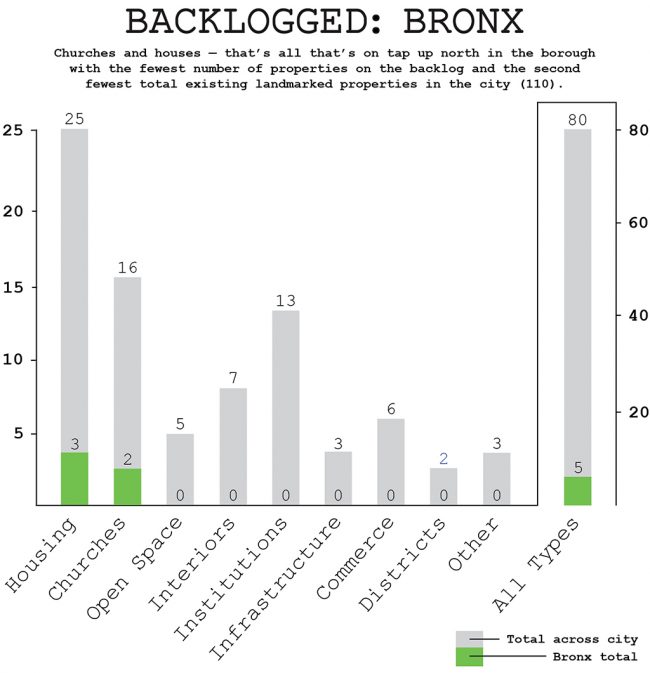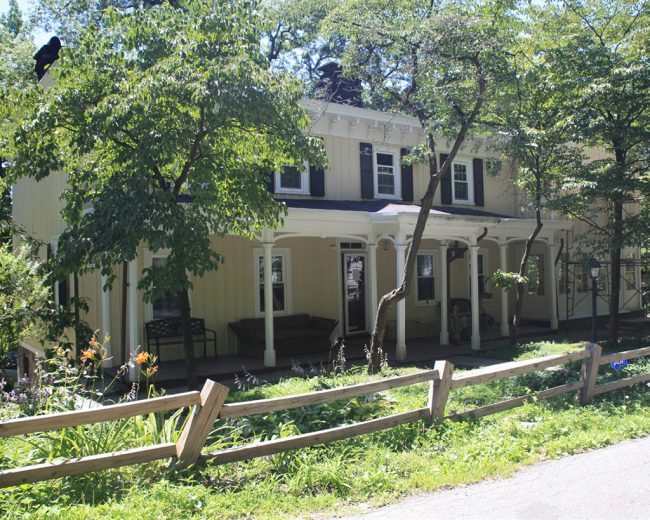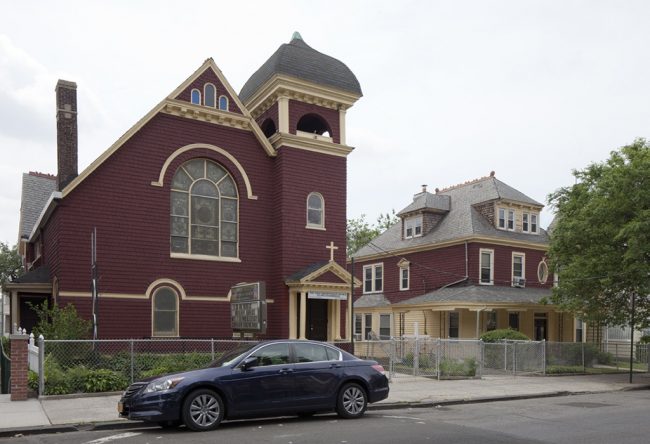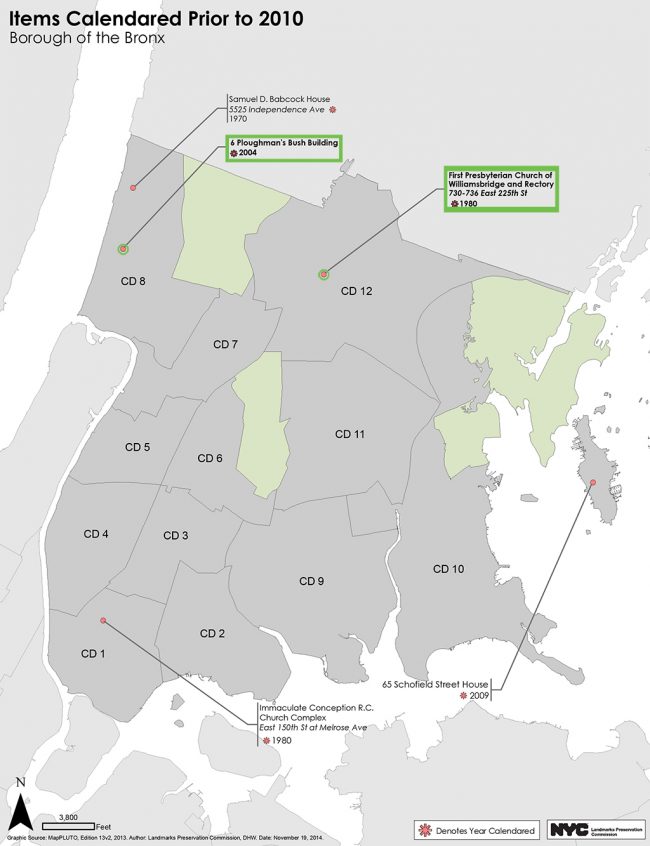
We are celebrating 15 years — and counting — of stories that are deeply researched and deeply felt, that build a historical record of what the city has been.
We are celebrating 15 years — and counting — of stories that are deeply researched and deeply felt, that build a historical record of what the city has been.

Categories are not official Landmark Preservation Commission designations and were created by Urban Omnibus. Housing includes single- and multi-family housing; Open Space includes parks, cemeteries, and a country club; Institutions include cultural institutions and schools; and Commerce includes commercial and industrial properties. Sites that include multiple buildings up for landmarking are presented as one property. | Graphic by Jonathan Tarleton
Over the past two weeks we’ve brought you stories from a number of properties around the city: an old farmhouse on Staten Island, the gatehouse to a historic Queens cemetery, and the Broadway theaters of 42nd Street. Among many others, these highlights currently sit on the New York City Landmarks Preservation Commission’s backlog of almost 100 properties. The sites were once considered by the Commission for landmark designation (and attendant protection under law) but were not immediately acted upon — in LPC terminology, they were “calendared.” Some properties have languished on the calendar since the mid-60s.
Under mounting pressure from the City Council to speed up its process, the Commission launched an initiative to decide the status of these limbo properties by February 2016. Today, we’ll round out Landmark Limbo by visiting Brooklyn, where the LPC is considering the fate of an unusual fire service station on Coney Island, and the Bronx, for a trip to a beautiful, eclectic Presbyterian church.

The Delafield Estate Building at 6 Ploughmans Bush | Photo via LPC
Fieldston Delafield Estate Building (Housing)
Address: 6 Ploughmans Bush
Originally Calendared: 2004
Built: circa 1867
The only remaining building from the Delafield Estate is a strong preservation candidate for its historical significance and architectural features. The estate dates back to 1829 when wealthy families were beginning to build summer homes and retreats in the rural farmland along the Hudson River. Major Joseph Delafield, president of the Lyceum of Natural History (now the New York Academy of Sciences), purchased 257 acres in modern-day Riverdale; his family later developed part of the estate as the community of Fieldston.
6 Ploughmans Bush once had original neighbors, a cottage and stables, but the cottage, built around 1849, only lasted about a century. The existing house, built a few decades after the cottage, shares the same Gothic Revival style with board-and-batten siding and a spacious front verandah, a popular feature of rural summer homes in the mid-19th century. During the initial LPC hearings in 2004, many organizations as well as Riverdale neighbors expressed support for designating the building; the owners, however, dissented from this majority.

The Williamsbridge Presbyterian Church and Rectory | Photo via LPC
First Presbyterian Church of Williamsbridge and Rectory (Churches)
Address: 730-736 East 225th Street
Originally Calendared: 1980
Built: 1902
Architecturally speaking, the First Presbyterian Church and Rectory in Williamsbridge stands out from its neighbors: mostly two- or three-story townhomes and duplex apartments. Constructed by local architect John Davidson, the shingle-clad buildings are coated in rich red paint with bright yellow trim. The late Queen Anne style church still holds the original arched, stained-glass windows and features an attached belfry with a four-cornered ogival roof (the roof curves up from the corners, like a modified dome, to a spire at the top). The bells unfortunately no longer ring. The rectory, which now houses the congregation’s offices, has a turret that echoes the belfry. While initially made up of the neighborhood’s Scottish and Italian populations, the small congregation is now mostly of Caribbean descent.

All Bronx properties currently in the LPC backlog. Properties profiled above are bordered in green. Click here from more information on each Bronx site. | Map via LPC
Ben Pardee is an urbanist, hip-hop enthusiast, and yogi. He is a project assistant on Urban Omnibus and blends his deep Texan pride with Yankee sensibilities.
The views expressed here are those of the authors only and do not reflect the position of The Architectural League of New York.